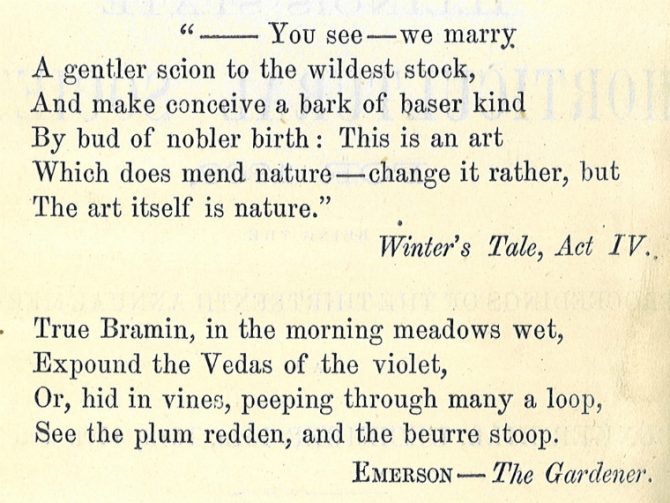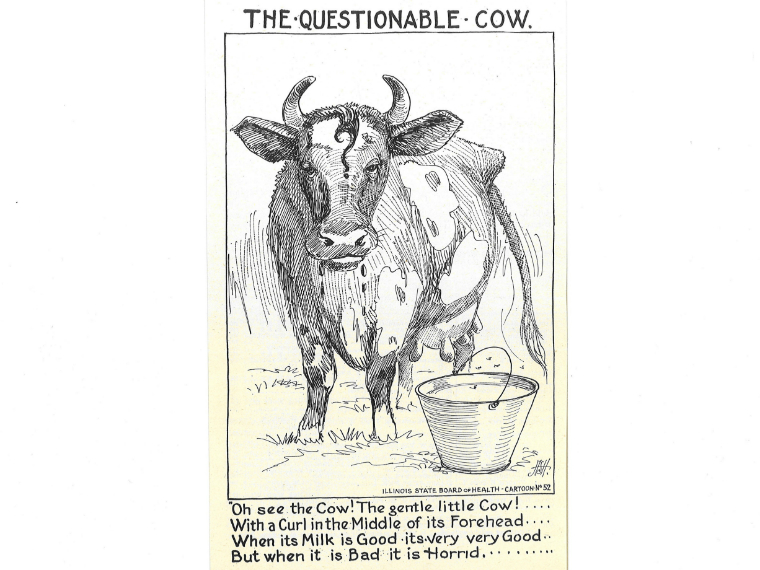It may seem funny to us now, but in the late 19th and early 20th centuries, it was not uncommon to see poems used as introductions to state government reports, or interspersed throughout departmental publications. Some featured writings by famous poets, while others used anonymous or little-known authors. As April is National Poetry Month, it’s a great time to take a look at how poetry—from sublime to sappy—enlivened these publications.
These gardening-related excepts from William Shakespeare and Ralph Waldo Emerson were used to preface the 1868 Transactions of the Illinois State Horticultural Society:

Poetry was considered an important subject in school during this period. The Illinois Office of the Superintendent of Public Instruction (precursor to the State Board of Education) published some poems by students at the Forestville School in Chicago in Circular no. 55, from 1911. This one was by a seventh-grader named Marion Dwight:

Sometimes the poems were used as part of a campaign to educate the public. Before pasteurization was common, many people got sick from milk from diseased cows. This example, from the February 1917 issue of Illinois Health News, served as a warning. Although no author is cited, it's clearly a riff on "There was a little girl" by Henry Wadsworth Longfellow:

Sometimes the poetry was meant to raise people's spirits and inspire them to enlist or serve in other ways during times of war. The Illinois State Council of Defense reprinted many patriotic poems in the Illinois State Council News during World War I. One of the most famous was "In Flanders Fields," by John McCrae (misspelled as McRae below), which appeared in the January 4, 1918 issue:

Although it's no longer in style to include poetry in government documents, it's fun to stumble across them when doing research!


Add a comment to: Finding Poetry in Illinois State Documents